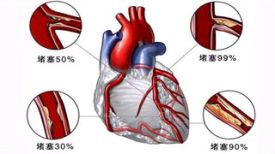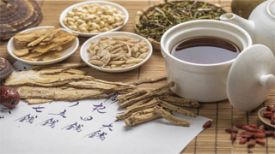
Hip tendinitis is caused by inflammation of the hip flexor tendon, which lifts the leg. Hip tendinitis is usually caused by excessive fatigue of these muscles without sufficient rest to allow them to recover. This is a rare cause of pain in the buttocks and groin. This situation may occur due to overuse associated with repeated flexion and rotation of the femur. Professional dance, gymnastics, and football.
It is associated with inflammatory arthritis, acute trauma, and overuse syndrome, with women being more susceptible than men and often affecting younger patients. This situation may also occur after hip replacement surgery, especially if the hip joint protrudes from the pelvis, causing tendon friction and inflammation.
This article introduces the causes and symptoms of hip tendinitis, as well as how to diagnose and treat it.
What is tendinitis?
Tendinitis is an inflammation of muscle tendons that can cause pain and tenderness. The more muscles are used, the more severe the pain and tenderness become.
1. The arrow points to the lumbar tendon, indicating the possible site of release.
2. The pain distribution pattern of lumbar tendon problems.
Tendinitis is an overuse injury. This means that tendons are subjected to repeated pressure through repeated muscle contractions, leading to micro tears in the muscles and tendon fibers. If there is not enough rest to allow these micro tears to heal, the affected tendons will form a chronic cycle of pain and inflammation. The most common cause of athlete tendinitis is acute injury, which forces the tendon to stretch beyond its normal range of motion, leading to pain, swelling, and inflammation.
In addition to the hip flexors, other parts of the body that are prone to tendinitis include:
Total tendon of wrist extensor muscle (tennis elbow)
Total tendon of wrist flexor muscle (golf elbow)
Achilles tendon (tendinitis)
Patellar tendon (jump shot knee)
Thumb tendon (De Quervain tenosynovitis)
Tendinitis and tendinopathy
Tendinitis and tendinopathy are not the same thing. Understanding the differences will determine your treatment approach. The tough and flexible fibrous tissue band that covers the whole body and attaches muscles to bones is called tendon. During exercise, they are prone to become irritable or inflamed due to the pressure of repetitive movements or acute injuries caused by falls and collisions.
What is tendinitis?
Tendinitis, also spelled as tendinitis, refers to inflammation of tendons caused by stimulation and inflammation. Tendinitis can cause persistent deep pain, thereby limiting easy and comfortable movement.
What is tendinopathy?
Doctors use the term 'tendinopathy' to describe many tendon injuries, such as tennis elbow, golf elbow, Achilles tendon injury, etc. Experts now recognize that typical tendon injuries are often caused by long-term overuse leading to tendon deterioration. Any related inflammation.
The difference between the two
The difference between these two situations is important because the treatment methods for tendinitis are different from those for the deterioration of tendinopathy (tendon degeneration). Inflammation caused by acute tendinitis usually has a rapid response to medication and anti-inflammatory treatment. However, if the injury is caused by the degeneration of tendon tissue, the treatment may be quite lengthy, and the focus is on improving the strength of the tendon and rebuilding the tissue.
Common causes of hip tendinitis
Sometimes, due to improper exercise techniques or biomechanical issues, tendinitis or tendinopathy may occur. In such cases, collaborating with a coach or trainer is the best way to prevent the development of chronic problems. Ensuring proper warm-up and sufficient cross training can also help prevent tendon overuse injuries.
Overuse injuries are caused by repeated use, stress, and trauma to the body's soft tissues (muscles, tendons, bones, and joints) without proper healing time. They are sometimes referred to as cumulative trauma or repetitive stress injuries.
The hip flexors mainly refer to the iliopsoas muscle, the joint unit of the iliopsoas muscle, and the muscles of the gluteus maximus and lumborum minor. The iliopsoas muscle originates from the vertebrae of the pelvis and lower spine, and attaches to the top of the femur (femur).
Overall, the function of the iliopsoas muscle is to flex the hip - this is the movement of the hip joint that brings your leg closer to the front of the body, such as lifting your leg to take a step or jump. When you stand on one or both feet, it also helps maintain torso stability and helps you stand up from a lying position.
Iliopsoas tendinitis is most commonly caused by physical activity that requires repeated lifting of the leg during walking, running, kicking, and jumping. These activities may include running, dancing, gymnastics, martial arts, cycling, and playing soccer.
Iliopsoas tendinitis may also occur after hip arthroscopy. This is a minimally invasive surgical procedure used to repair structures within the hip joint, as there are changes in joint movement and muscle activation patterns after surgery.
Symptoms of hip tendinitis
The main symptoms of hip tendinitis include soreness or deep pain in the anterior part of the hip, which intensifies after physical activity and limits the range of motion due to the pain.
Other symptoms of hip tendinitis include:
Front buttock tenderness
Hip flexor muscle tension
Lower back pain
Discomfort after prolonged sitting
Gait (walking) pattern change characterized by shortened steps
Posture change, pelvic rotation forward, exaggerated lower back curve
Diagnosis of Hip Tendinitis
Hip tendinitis is diagnosed through physical examination and reviewing the history of symptoms. You can also perform an X-ray examination on the hip to check the alignment of the hip joint and determine if there is a fracture or arthritis.
Treatment of Hip Tendinitis
The initial treatment for iliopsoas tendinitis includes cessation of vigorous activity, as well as ice packs and gentle stretching exercises. If necessary, nonsteroidal anti-inflammatory drugs (NSAIDs) can be used to alleviate pain and swelling, reduce inflammation, and decrease muscle spasms.
If chronic pain persists, you may need to inject cortisone into the iliopsoas tendon.
A structured physical therapy plan focuses on hip flexor muscle stretching and strengthening of hip flexor, gluteal, and core muscle groups, which will help you recover more fully.
surgical operation
For cases that have not improved after three months of treatment, surgery can be performed to extend the iliopsoas tendon. This surgery is called tenotomy. It involves making a small incision on a portion of the iliopsoas tendon to increase its length while reducing tension when it fully heals.
Although tendon transection of the iliopsoas muscle may temporarily reduce its strength, this weakness usually disappears within three to six months after surgery.
Home treatment of hip tendinitis
Most symptoms of hip tendinitis can be treated at home using the following methods:
RICE method (rest, ice compress, compression, and elevation)
Rest - activities that avoid further stress on your injury are the most important part of the rehabilitation process. If you don't stop pulling tissues, they may lose the opportunity for complete recovery.
However, it is recommended not to fix, but to rest relatively or continue moving while allowing the injured area to heal.
To do: Light exercise, such as walking or swimming. For hip problems, try stretching exercises.
Do not: excessive. Doing too much and too quickly can worsen the condition and delay healing.
Ice (and heat) - Swelling can lead to loss of athletic ability. For new injuries, cold therapy is more effective than heat therapy. Using hip ice packs for up to 20 minutes can numb pain and prevent fluid from flowing out by constricting blood vessels.
Two or three days later, you can apply hot compress to the injured area to accelerate recovery. Hot compress helps to dilate blood vessels and promote blood circulation. Heat can also relax stiff muscles and alleviate pain caused by muscle tension.
What should be done: Place a cloth between the skin and the backpack to avoid ice burns. Apply repeatedly and intermittently, once every hour or every four to six hours.
Do not: Leave the cold compress bag on the skin for more than 20 minutes.
Compression - Using elastic bandages to provide compression, promote the flow of oxygen rich blood to the affected area, while preventing unwanted fluids from entering, thereby relieving pain.
To do: Use this hip ice pack to enhance your cooling experience. This highly recommended ice pack can keep you cold for a long time and comes with an adjustable strap that fits snugly against your hips and provides excellent cold compression.
Do not: wrap the elastic bandage too tightly, as this may exacerbate swelling.
Elevate - Keeping the injured buttocks at a level above the heart will further prevent fluid from moving away from the injured area.
Method: Place your buttocks on a stacked pillow.
Do not: save altitude time. Just like frosting, it takes about 15-20 minutes for you to maximize its therapeutic effect.
Stretching exercises and exercises
Isn't it counterintuitive to engage in exercises that may initially lead to tendinitis? Experts say that this is not the case. In fact, they recommend the RICE method, stretching exercises, and light exercise in various rehabilitation plans for hip injuries.
To cope with daily muscle pressure, improving flexibility and strength is key. These gentle activities can help alleviate the pain of hip tendinitis:
Kneeling hip flexion muscle stretch
Kneel over your left knee. Bend your right knee and place your right foot flat on the floor.
Place your hands on your left thigh.
Push the hips forward and squeeze the gluteal muscles to further stretch the hip flexors.
Maintain for 30 seconds to 2 minutes.
Change the other leg and repeat.
Four character stretch
Lie on your back, bend your knees, and place your feet flat on the floor.
Cross your right ankle over your left knee and keep your right foot bent.
Thread your right hand through your legs and cross your fingers below the crease on your left knee.
Pull your left knee towards your chest. Pause when you feel stretch on your right hip and buttocks.
Hold for 30 seconds, then slowly release.
Repeat on the left side.
Sitting posture 4-shaped stretching and expansion action:
Hip joint flexion and extension
Lie on the floor with legs straight.
Grasp the right knee and gently move it towards the chest.
Try to bring it as close to your chest as possible without feeling uncomfortable.
Release and return to the starting position.
Change your left leg.
Lateral hip abduction and extension
Lie on your side and use the upper leg as the strength you want to strengthen.
Bend your calves. Keep your upper legs straight and your feet bent.
Lift the upper leg up, slightly back, and then down again.
Hold for three seconds, then put it down.
Make two sets for each leg and repeat 10 times for each set.
Sitting posture with buttocks extended
Sit on the floor and stretch your legs in front of you.
Keep your back straight, lift your left leg, and place your left ankle on your right knee.
Tilt forward as slowly as possible to deepen the stretch.
Hold for 20 seconds, then switch to the other side and repeat.
Raise straight legs
Lie flat.
Bend the left leg and keep the right leg straight. Tighten the right leg and lower the knee towards the floor
Lift your right leg until your thighs meet, then slowly lower it.
Change the other leg.
Equidistant clam
Lie on your side with your knees slightly bent.
Gently lift your leg, but do not lift it completely.
Hold for 10-30 seconds, then relax.
Repeat on the other side.
Do: Practice correctly.
Do not exert too much force. When your buttocks start to ache, stop and rest to prevent the condition from worsening.
Prognosis of Hip Tendinitis
Generally speaking, if one takes sufficient rest during activities that worsen the condition and allows the inflamed tendons to heal, the prognosis for complete recovery of tendinitis is good.
For cases of chronic and severe iliopsoas tendinitis that require surgery, the postoperative prognosis is usually good.


